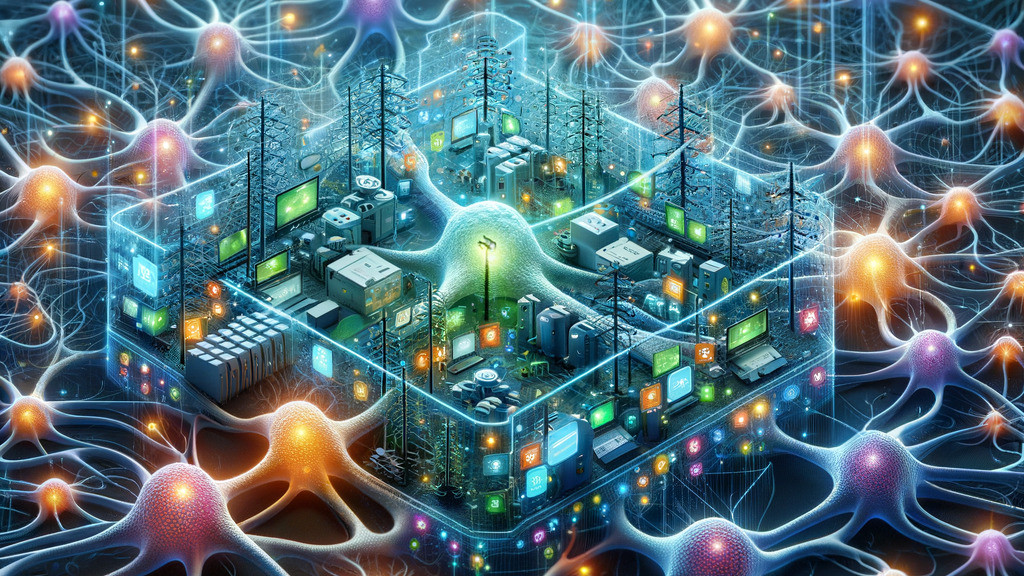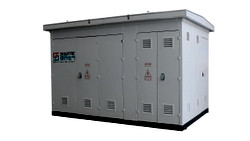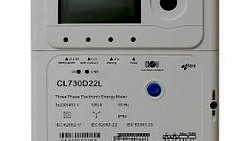The growing need for electricity, coupled with the integration of renewable energy sources into the power grid, has sparked the evolution of smart grids. These modernized electrical grids leverage cutting-edge technologies to enhance the efficiency, reliability, and sustainability of the power system. A key player in smart grids is the smart meter, which offers real-time insights into energy consumption and production. Neural networks have emerged as a promising solution for analyzing and managing the vast volumes of data generated by smart meters. However, it's important to address the privacy concerns associated with the use of neural networks in smart grids.
What are Neural Networks?
Neural networks, also known as artificial neural networks (ANNs), are computational models inspired by the structure and function of the human brain. They consist of interconnected processing units, called neurons, that can learn patterns in data through training. Neurons receive input from other neurons or external sources, process the input using a transfer function, and produce an output signal. The weights of the connections between neurons determine the strength of the input signals and can be adjusted during training to improve the network's performance.
In the world of smart grids, neural networks are a particular type of machine learning technique. Machine learning, on the other hand, covers a broader range of methods that allow computers to learn from data without explicit programming. While neural networks are just one kind of machine learning model, there are other approaches like decision trees, support vector machines, and random forests that fall under the umbrella of machine learning.
Compared to other machine learning algorithms, neural networks excel at recognizing complex patterns and nonlinear relationships in data. Their interconnected structure allows them to capture intricate dependencies and make high-dimensional predictions. This makes neural networks particularly useful in tasks such as load forecasting, fault detection, and anomaly detection in smart grids.
So, while neural networks are a powerful tool within the set of machine learning procesures, it's important to remember that machine learning encompasses a broader range of techniques that can be applied to various smart grid applications.

(symbol image, credit CLOU)
Neural Networks for Smart Meters
Smart meters generate a large volume of data on energy consumption patterns, voltage levels, and power quality. Analyzing this data can help utilities detect anomalies, forecast demand, and optimize energy distribution. Neural networks can be used to process and analyze smart meter data for various applications, such as:
- Fault Detection and Diagnosis
Neural networks can be trained to recognize patterns associated with faults in the power system. By analyzing smart meter data, neuronal networks can detect and diagnose faults in real-time, reducing downtime and maintenance costs. - Load Forecasting
Accurate load forecasting is essential for effective energy management and planning. Neural networks can analyze historical smart meter data to predict future energy demand, taking into account factors such as weather patterns and consumer behavior. - Demand Response
Demand response programs encourage consumers to reduce their energy consumption during peak demand periods. Neural networks can be used to analyze smart meter data and develop personalized demand response strategies for individual consumers, improving the overall efficiency of the power system. - Energy Theft Detection
Energy theft is a significant problem for utilities, resulting in revenue loss and compromising the reliability of the power system. Neural networks can analyze smart meter data to detect anomalies associated with energy theft, such as sudden changes in energy consumption patterns.
Neuronal Networks for Smart Grids
Neural networks can also be used to improve the efficiency and reliability of smart grids. Some applications of neuronal networks in smart grids include:
- Grid Optimization
Neural networks can be used to optimize the operation of smart grids by analyzing data from various sources, such as smart meters, weather forecasts, and renewable energy generation. By optimizing the distribution of energy, neural networks can reduce energy losses and improve the overall efficiency of the power system. - Renewable Energy Integration
The integration of renewable energy sources, such as wind and solar power, into the power grid presents significant challenges due to their intermittent nature. Neural networks can be used to forecast the availability of renewable energy and optimize its integration into the power system. - Anomaly Detection
Neural networks can be used to detect anomalies in the power system, such as voltage fluctuations and faults. By analyzing data from smart meters, phasor measurement units (PMUs), and other sources, neural networks can detect anomalies in real-time, enabling rapid response and reducing downtime. - Cybersecurity
Smart grids are vulnerable to cyber-attacks, which can disrupt the power system and cause significant damage. Neural networks can be used to detect and prevent cyber-attacks by analyzing network traffic and identifying patterns associated with malicious activity.
Privacy Concerns Related to Smart Meters and Smart Grids
Smart meters collect detailed information on energy consumption patterns, which can reveal sensitive information about consumers' activities and behaviors. For example, analyzing smart meter data can reveal when a home is occupied or unoccupied, which appliances are being used, and even personal habits such as sleep patterns. This information can be used for targeted advertising, price discrimination, or even criminal activities such as burglary.
To address these privacy concerns, it is essential to implement appropriate data protection measures. These measures include:
- Data Minimization
Collecting only the data that is necessary for the intended purpose can help minimize privacy risks. Utilities should limit the collection of smart meter data to the minimum required for billing, load forecasting, and system management. - Anonymization and Pseudonymization
Anonymizing or pseudonymizing smart meter data can help protect consumers' privacy by making it difficult to identify individual consumers. This can be achieved by removing personally identifiable information or replacing it with a pseudonym. - Data Encryption
Encrypting smart meter data can help protect it from unauthorized access or disclosure. Utilities should use strong encryption algorithms and secure key management practices to ensure the confidentiality and integrity of smart meter data. - Access Control
Implementing access controls can help ensure that only authorized personnel have access to smart meter data. Access controls should be based on the principle of least privilege, which means that users should only have access to the data they need to perform their job functions. - Transparency and Consent
Utilities should provide clear and concise information to consumers about the collection, use, and sharing of their smart meter data. Consumers should have the right to consent to the collection and use of their data and to opt-out of data sharing with third parties.
Neural Networks and Privacy
Neural networks can be used to process smart meter data in a way that minimizes privacy risks. For example, neuronal networks can be trained to analyze smart meter data at the aggregate level, rather than the individual level. This can help protect consumers' privacy by obscuring individual energy consumption patterns.
Neural networks can also be used to develop privacy-preserving data analysis techniques. For example, differential privacy is a technique that adds noise to data to protect individual privacy while still allowing for useful statistical analysis. Neural networks can be trained to incorporate differential privacy constraints, ensuring that the data analysis is privacy-preserving.
Challenges and Limitations
While neural networks offer many benefits for smart grids, they also present several challenges and limitations.
- Computational Cost
Training neural networks requires significant computational resources, which can be expensive and time-consuming. This can be a barrier to adoption for utilities with limited resources. - Data Quality
Neural networks require high-quality labeled data for training, which can be difficult and expensive to obtain. Smart meter data may be noisy, incomplete, or inconsistent, which can affect the accuracy of neuronal network models. - Interpretability
Neural networks are often referred to as "black boxes" because their internal workings are difficult to interpret. This can make it challenging to explain the results of neuronal network models to stakeholders and to ensure that they are fair and unbiased. - Security
Smart grids are vulnerable to cyber-attacks, and neuronal networks can be used to perpetrate these attacks. Utilities must implement appropriate security measures to protect against these threats, such as intrusion detection systems and secure communication protocols. - Scalability
Smart grids generate massive amounts of data, which can be challenging to process and analyze using neural networks. Utilities must ensure that their neural network architectures are scalable and can handle the volume, velocity, and variety of smart grid data. - Regulatory Compliance
Utilities must comply with regulatory requirements related to data privacy, security, and accuracy. Ensuring compliance can be challenging, especially in rapidly evolving regulatory environments.
Takeaway
Neural networks have emerged as a game-changer when it comes to handling the colossal amount of data that smart meters and smart grids generate. These networks play a crucial role in detecting anomalies, forecasting demand, optimizing energy distribution, and fortifying cybersecurity. By leveraging the power of neural networks, utilities can enhance the efficiency, reliability, and sustainability of the power system.
As smart grids continue to evolve, the use of neural networks will undoubtedly become even more vital in managing the intricate and ever-changing nature of the power system. However, it's important to address the privacy concerns that come hand in hand with neural networks. Utilities can ensure consumer privacy by implementing robust data protection measures such as data minimization, anonymization, encryption, access controls, and transparency. Striking a balance between reaping the benefits of smart grids and safeguarding privacy is key to a successful and secure energy future.
Thank you for reading! We value your thoughts and comments, so please feel free to share your insights.
Until then, keep shining bright like a solar panel on a sunny day! 😊☀️





All comments are moderated before being published. Inappropriate or off-topic comments may not be approved.